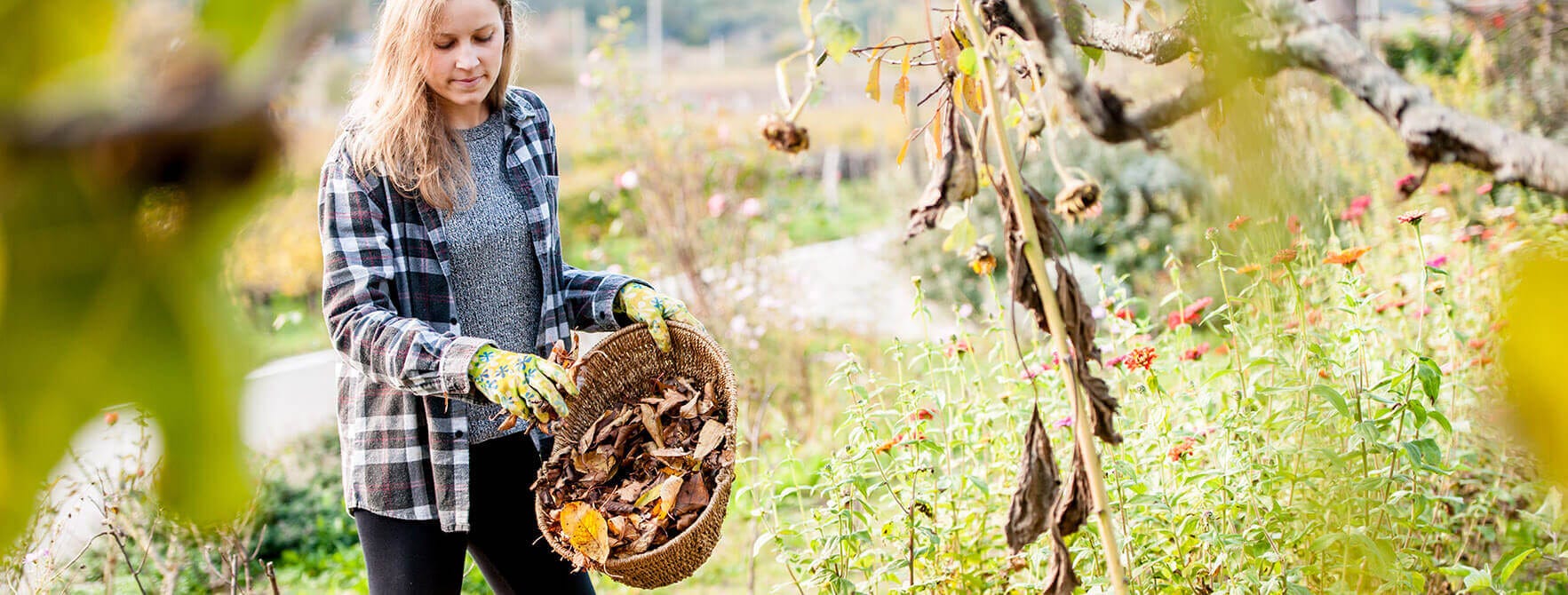
What is Compost
Composting does just that and more. In short, compost is organic material that can be added to a garden to help plants grow. According to studies conducted by the Environmental Protection Agency, 30% of food scraps we throw away could be composted but instead end up in landfills. By composting, we could reduce waste and save money on fertilizer by using what is already available in our own kitchens.
There are three basic ingredients to a good compost: browns, greens, and water. Browns are made up of materials like dead leaves, twigs, and branches and provide carbon. Greens are materials like grass clippings, vegetable scraps, coffee grounds, and fruit scraps and provide nitrogen. Water is essential in the breakdown process and is always needed to create the best compost possible.
Tips and Advice
To achieve the best results, always have plenty of greens and browns in your compost mixture. If possible, alternate between layers of greens and browns. It can be confusing not knowing what you have readily available that can be used in a compost. It might seem like everything in your fridge and pantry is capable of providing nutrients. However, that is not always the case. Try sticking to the following ingredients to make your compost.
| Material | Carbon/Nitrogen | Information |
|---|---|---|
| Fruits and Vegetables | Nitrogen | Add with dry carbon items |
| Eggshells | Neutral | Crush before adding |
| Coffee grounds and filters | Nitrogen | |
| Tea bags or leaves | Nitrogen | |
| Nut shells | Nitrogen | Avoid black walnut shells |
| Shredded paper | Carbon | Do not add glossy paper or colored inks |
| Shrub Prunings | Carbon | Wood prunings take longer to break down |
| Cardboard | Carbon | Shred before placing in composter |
| Seaweed or Kelp | Nitrogen | Use in thin layers. Also provides trace minerals. |
| Twigs or branches | Carbon | Wood takes longer to break down |
| Grass clippings | Nitrogen | Keep in thin layers to prevent matting |
| Houseplants | Nitrogen | Make sure plants are disease and pesticide free |
| Hay and straw | Carbon | Add in thin layers |
| Leaves | Carbon | Shred for best results |
| Sawdust | Carbon | To avoid clumping, apply in thin layers |
| Wood chips | Carbon | Use in smaller amounts. Very high in carbon. |
| Flowers | Nitrogen | Chop up any woody stems |
| Dryer and vacuum cleaner lint | Carbon | Use lint from natural fibers for best results |
| Fireplace ashes | Carbon | Sprinkle in small amounts and only use ash from clean materials |
What to Leave Out of Compost
Now that you know what to add to compost, you need to learn more about what to avoid adding. Some items, even though they are made up of organic materials, may actually harm your garden plants.
| Materials | Why to Avoid |
|---|---|
| Black Walnut Tree Cuttings or Leaves | Releases substances that are toxic to certain species of plants |
| Coal or Charcoal Ash | Can potentially contain substances that are harmful to plants |
| Dairy | Causes unpleasant odors that could attract pests |
| Meat | Unless you have a composter designed for this material, it will attract pests |
| Bones | Unless you have a composter designed for this material, it will attract pests |
| Weeds | Do not put any plant that may have seeds in a composter because you could potentially spread them wherever you put the compost |
| Diseased Plants | Diseases can spread from a diseased plant in your compost to wherever you apply the compost in the future |
| Fruit peels or rinds | These may contain pesticide residues and should not be included |
| Pet Manures | Do not include this material if you plan to use the compost on food crops since they could contain parasites or pathogens |
| Plants Treated with Pesticides | May kill beneficial organisms needed to break down compost |
| Fats, Oils, or Grease | Creates unpleasant odors that attract pests |
Where to Get Compost
Compost can be obtained two different ways, in a store or it can be made at home. Store-bought compost is effective but making it yourself is not only rewarding but will save you time and money. Compost is made from organic materials that are readily available in your home and on your property. Food scraps that would have been thrown away, yard waste that normally gets put on the curb, or houseplants that did not survive are all great ingredients for compost that you already have on hand.
Each time you compost, the ingredients will be a little bit different. Keep the green to brown ratios at 4 parts green to 1 part brown. The green ingredients have higher concentrations of nitrogen which is what helps your compost break down, so it is needed in larger amounts. If you don’t have enough yard waste or food scraps available, you can supplement your existing compost with store-bought varieties. Check the label before you buy to ensure you’re getting the right mix you need. Many products found in stores are formulated for new gardens and are comprised of soil and compost mixes. Established gardens don’t usually need extra soil, just the extra organic material found only in compost.
Easiest At-Home Composting Methods
Composting can be done practically anywhere, indoors or outdoors. The most common types of composting methods are enclosed container bins, tumbler bins and holding units, open compost piles or heaps, and trench/pit composting. Choose a method that best suits your lifestyle and space so you can be as successful as possible without feeling overwhelmed by the process.
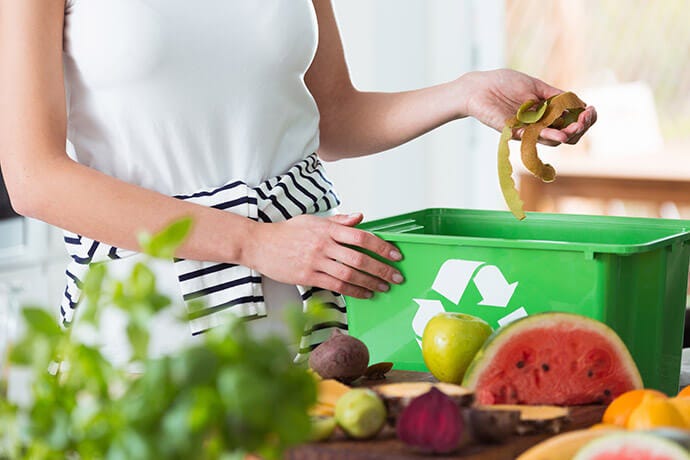
Enclosed Container Bins
Enclosed container bins are best for smaller, indoor composting operations. If you have very little waste and have access to a sealable container you can compost inside your home! Containers can be tightly sealing tupperware containers as long as there is a good seal. The smell is not always pleasant. This type of composting tends to be very low maintenance but does take longer, 6 months to 1 year, because of the lack of oxygen.
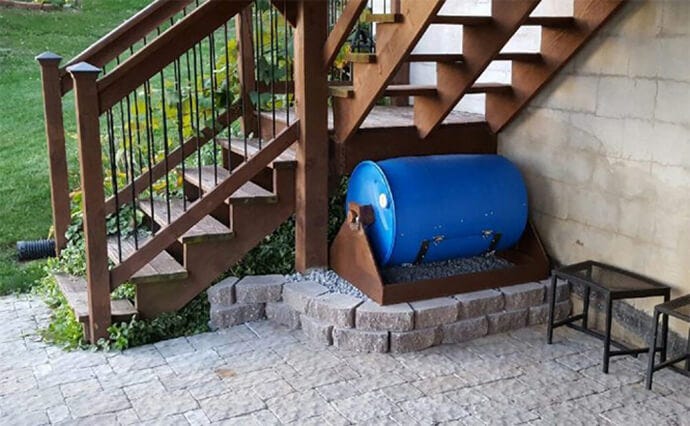
Tumbler Bins
Tumbler bins are enclosed containers that allow you to aerate or turn the compost as it breaks down. This allows oxygen to be distributed which speeds up the process. You can build your own or invest in a commercially made tumbler bin. Some bins are not made to tumble and are called holding units. These composting bins can usually be opened wide enough to allow turning and are often made with slats or have holes punched in them to improve ventilation.
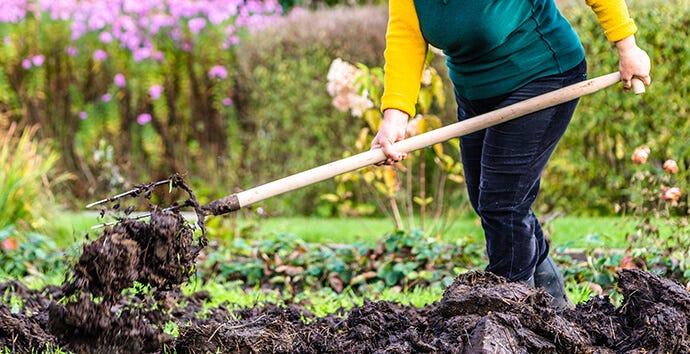
Open Compost Heaps
Open compost heaps are best used in larger yards where you can designate a certain area just for composting. Heaps or piles of compost tend to smell unpleasant so make sure you place them away from your home or any areas where you spend time in your yard. Compost piles are a great method to compost large amounts of materials. They are also easily accessible so you can aerate them monthly with ease.
Trench Composting
Trench or pit composting is perfect for getting rid of those extra kitchen scraps and does not require much effort or maintenance to be successful. All you have to do is dig a hole 1 foot deep in your garden and add shredded or chopped food waste. Cover the hole again and leave for a year or so. You can add these holes randomly throughout your garden or in an organized way. Each season you can plant your garden plants in different areas so they can enjoy the compost once it has fully broken down. An effective method involves creating a 3 year composting plan where you alternate which row you add compost, leave one row to breakdown, and add plants in another.
How to Compost
- Choose a Container Type – The hardest part of composting is choosing the right method for your lifestyle. Once you have that bought or built and then placed, you can start composting right away!
- Combine Green and Brown Materials – As you learned above, the best compost for your garden contains both carbon and nitrogen found in green and brown materials. Do any shredding or cutting and make sure your ingredients are disease and chemical free. Then add in your materials in small layers.
- Keep Pile Damp – An essential ingredient in compost is water. It helps the breakdown process start and keep going. If your compost dries out it won’t be able to break the ingredients down as well.
- Speed Up Process by Mowing or Shredding – The bulkier or larger an item, the longer it will take to break down. Speed up the process by mowing yard waste before you place it in your container or pile. Try shredding or breaking materials like paper or eggshells.
- Turn or Rotate Monthly in Warm Temperatures – As the composted materials breakdown and the pile gets smaller in size, turn your compost or mix everything up. This will allow more oxygen to permeate through the layers, especially the ones at the bottom where oxygen might have a harder time reaching. Compost breaks down faster in warmer weather. Turn the materials more in the spring and summer and about half as much in the fall and winter.
- Add Material Regularly – Composting is an ongoing process. As you produce waste you can add it to the pile or tumbler. This will provide a constant supply of new materials to compost, so you don’t have to start from scratch each season. The more that goes into the compost, the more organic material you will have for your garden!
- Start Spreading – It might take anywhere from 2 months to 2 years, but when the pile is half the size and bottom layer is dark with an earthy smell and crumbly texture your compost is now a success and you’re ready to spread it in your garden!
Benefits of Compost
There are seemingly endless benefits of adding compost to your garden. To keep this page from looking like a novel, let’s just discuss the major benefits.
- Improves Soil Structure & Quality – Compost is often called a soil conditioner because it can improve the quality of almost any soil. Compost allows soil to better retain nutrients, moisture, and air which plants directly benefit from. Good soil is a blend of inorganic materials (sand, silt, clay) and organic materials (compost, humus). The materials will vary depending on where you live but soil with compost added tends to have more air, hold more moisture, and is easier to cultivate with its crumbly texture. All of these benefits make gardening much more likely to be successful.
- Adds nutrients – While compost is not fertilizer, it does have nutrients that break down, like nitrogen, which feed the microorganisms in the soil that ultimately help prevent disease or pests from invading. Depending on the compost’s ingredients, it can have nutrients and minerals plants need for healthy growth. Compost also contains lots of micronutrients like manganese, iron, zinc, etc. which play a minor but important role in the health of a garden.
- Releases Nutrients Over Time – Because of the hodgepodge of ingredients in compost, different items will break down faster than others. This means nutrients will be supplied to a garden over time which is much healthier than shocking plants with a bunch of nutrients at once. Plants need time to take up the nutrients and then use them. Adding too much at once means there will be lots of waste. Using compost will help cut down on nutrients going to waste.
- Attracts Earthworms – While they are definitely not the cutest creatures in your garden, they are a sign of a healthy garden. Earthworms will feed on the composted items and return nutrients back into the soil as they help the compost break down even more. Having these creatures and other decomposers in your soil is a sign your garden is flourishing.
- Helps Control Diseases and Pests – Compost provides nutrients that microorganisms in the soil need to thrive. When beneficial microorganisms are abundant, it makes it harder for disease-causing bacteria and pests to find a space to thrive as well. By keeping your soil healthy you can help keep your plants healthy.
- Lowers Carbon Footprint – Composting is a great way to recycle goods that would normally end up in a landfill. You can reduce your waste by over 25% just by composting. You can also lower your carbon footprint by using compost instead of chemical fertilizers.
Difference Between Compost and Fertilizer
While both provide nutrients to the soil and ultimately plants as well, there is one major difference between compost and fertilizer. Compost feeds the soil and the soil food web while fertilizers feed plants. Organic fertilizers do tend to provide nutrients to the soil as well but the ingredients are intended to only meet the needs of growing plants. Compost provides a wide variety of nutrients like carbon, nitrogen, oxygen, etc to the soil to benefit the organisms living in it. The better the soil, the better any garden can reach its full potential. For the best results, use a combination of compost and fertilizer. As your soil gains more nutrients and becomes healthier, you will eventually need less fertilizer.
Compost Tea
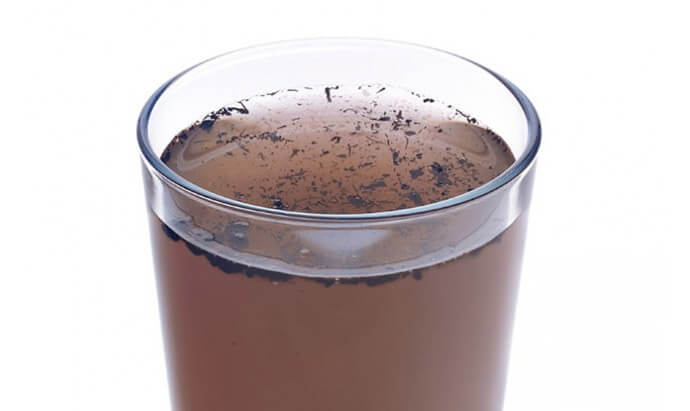
Similar to the tea you drink, compost tea is simply water in which compost has steeped. The brewing process makes the ingredients release their nutrients into the water. Plants can more readily absorb the nutrients, giving your garden an immediate boost.
When mixed, the tea should be pale yellow or brown with a sweet or earthy smell to it. You can pour the mix directly on the roots of plants. While compost tea is a healthy boost of nutrients, it is not a substitute for nutrient dense fertilizers or even regular compost.
Common Mistakes & Useful Tips
Composting requires a learning curve but is a gardening technique that is accessible to anyone no matter the size of your yard. Keep these tips and common mistakes in mind to save you time and trouble down the road.
- Go Big – Starting with too little material might mean you end up with a lot less compost than expected. Unless you’re using a very small container, add a lot of ingredients since compost usually shrinks down to half of its original size.
- Just Add Water – Keep compost moist but avoid soaking the materials. Breaking down organic matter is a process that needs water to be effective.
- Less is Not More – Get creative with the materials you add. The more variety, the more nutrient diversity you can add to your compost. Make sure to add items that break down quickly as well as items that take longer to ensure a constant but slow release of nutrients over time.
- Activation – Some ingredients can help kick-start the decomposition process, especially those that are high in nitrogen. These materials include grass clippings and comfrey leaves.
- Handling Unpleasant Odors – Chances are if you live close to other people, they will not appreciate a large, stinky pile of compost. Eliminate smells by keeping dairy, bones and meat out of your compost. You can also cover newly added ingredients with a layer of grass clippings, lime, or calcium to mask odors. If your compost smells like ammonia, you need to add more carbon-rich items like straw or leaves.
- Steamy Compost – It might seem like a problem, but it is actually a really good sign! A hot, healthy pile of compost will naturally let off steam as the microscopic organisms break down your ingredients into compost.
- Shoo Flies – Flies love compost. Keep them away as much as possible by covering any fruit or vegetable matter with grass clippings. Lime and calcium will also discourage flies from invading your compost.
- Clumping – This is one of the most common problems compost makers face. When ingredients get too wet they will stick together and not allow as much oxygen to get in between each layer, which will slow the breakdown process significantly. Break these clumps apart or leave them to the side to dry before adding them.
- Soggy Compost – Water is essential, but too much water is a nuisance. Compost piles get soggier in the winter when carbon items are in shorter supply. Return your compost to a good balance of carbon and nitrogen items and you will get rid of the sogginess.

